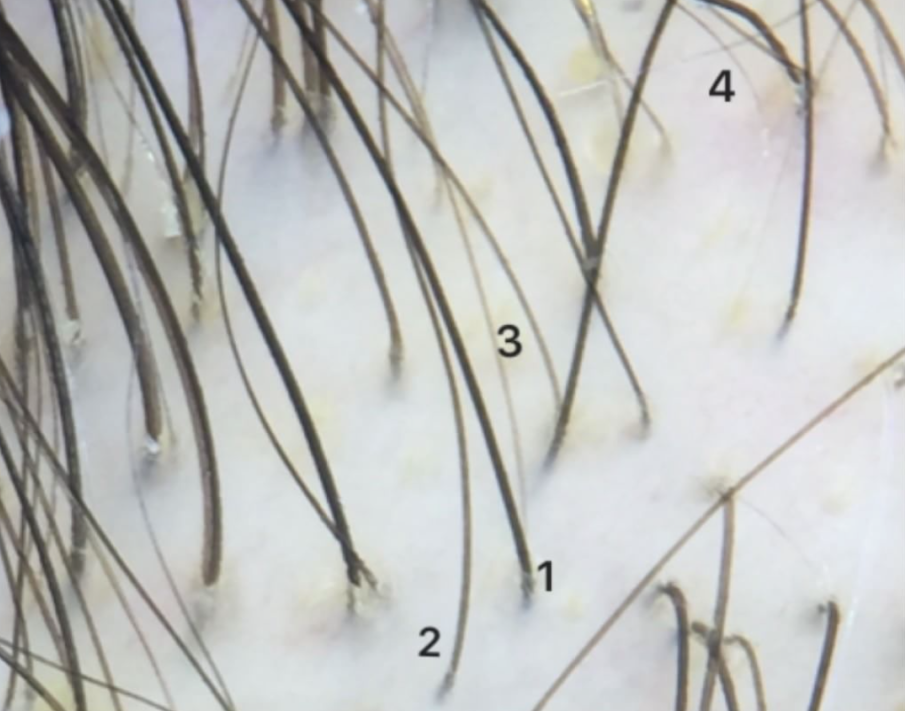Trichoscopy—or scalp dermoscopy—is a highly effective, non-invasive technique that helps uncover the earliest signs of hair and scalp changes, often before they can be seen with the naked eye. While the examples below focus on some of the most common conditions—like pattern hair loss, alopecia areata, and certain scarring disorders—this technology is valuable across many different types and patterns of hair loss.
Here are just a few ways it makes a difference:

Detecting Early Pattern Hair Loss
One of the first clues to androgenetic alopecia (male and female pattern hair loss) is when hair shafts vary noticeably in thickness. This process, called miniaturization, is a gradual shift from strong, thick hairs to finer, weaker ones. Trichoscopy can spot these subtle changes early—long before visible thinning occurs—giving patients more time to act.


